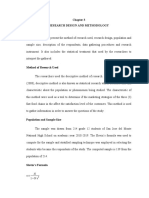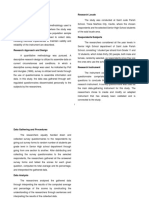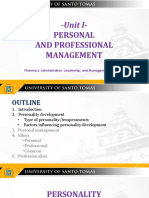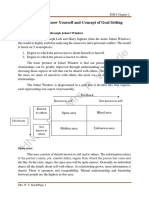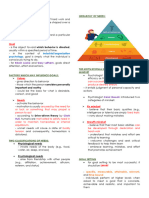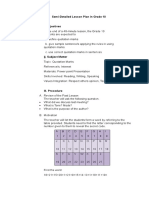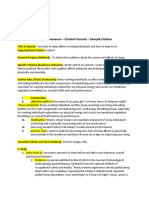100% found this document useful (2 votes)
35K views23 pagesChapter 4
The document contains 10 tables with data and interpretations about survey results. The tables provide information on:
1) Gender, age, education level, marital status and family size of 50 respondents
2) Percentage of respondents who have attended training programs and organizations that frequently conduct training
3) Number of annual training programs conducted by organizations and frequency of training programs.
The majority of respondents were male, aged 20-30, graduates, unmarried, and from families with 4-6 members. Over 70% had attended training and over 75% reported their organizations conducting frequent training. Most organizations held 1-4 training programs annually and quarterly training sessions were most common.
Uploaded by
ImrannkhanCopyright
© © All Rights Reserved
We take content rights seriously. If you suspect this is your content, claim it here.
Available Formats
Download as DOCX, PDF, TXT or read online on Scribd
100% found this document useful (2 votes)
35K views23 pagesChapter 4
The document contains 10 tables with data and interpretations about survey results. The tables provide information on:
1) Gender, age, education level, marital status and family size of 50 respondents
2) Percentage of respondents who have attended training programs and organizations that frequently conduct training
3) Number of annual training programs conducted by organizations and frequency of training programs.
The majority of respondents were male, aged 20-30, graduates, unmarried, and from families with 4-6 members. Over 70% had attended training and over 75% reported their organizations conducting frequent training. Most organizations held 1-4 training programs annually and quarterly training sessions were most common.
Uploaded by
ImrannkhanCopyright
© © All Rights Reserved
We take content rights seriously. If you suspect this is your content, claim it here.
Available Formats
Download as DOCX, PDF, TXT or read online on Scribd
/ 23




























